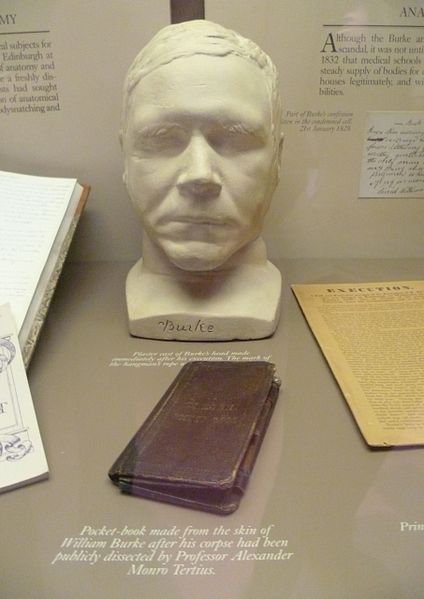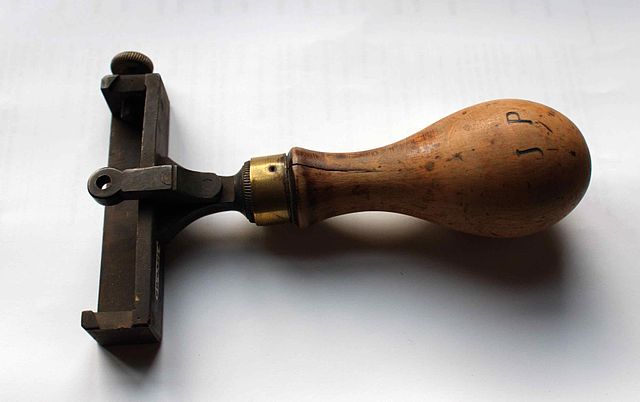Anthropodermic bibliopegy
Anthropodermic bibliopegy is the practice of binding books in human skin. As of April 2022, The Anthropodermic Book Project has examined 31 out of 50 books in public institutions supposed to have anthropodermic bindings, of which 18 have been confirmed as human and 13 have been demonstrated to be animal leather instead.
A book bound in the skin of the murderer William Burke, on display in Surgeons' Hall Museum in Edinburgh
A 17th-century book on female virginity at the Wellcome Library, rebound in human skin by Dr. Ludovic Bouland around 1865
Bound in 1863 by Josse Schavye, the same binder of the genuine anthropodermic Vesalius' De Humani Corporis Fabrica in Brown University, and who bound at least four books with human leather in his lifetime.
Panel with Latin inscription in the book: Hic liber femineo corio convestitus est ("This book has been bound with the skin of a woman")
Bookbinding is the process of building a book, usually in codex format, from an ordered stack of paper sheets with one's hands and tools, or in modern publishing, by a series of automated processes. Firstly, one binds the sheets of papers along an edge with a thick needle and strong thread. One can also use loose-leaf rings, binding posts, twin-loop spine coils, plastic spiral coils, and plastic spine combs, but they last for a shorter time. Next, one encloses the bound stack of paper in a cover. Finally, one places an attractive cover onto the boards, and features the publisher's information and artistic decorations.
A traditional bookbinder at work
Bookbinder's type holder
Early medieval bookcase containing about ten codices depicted in the Codex Amiatinus (c. 700)
9th-century Qur'an in Reza Abbasi Museum








